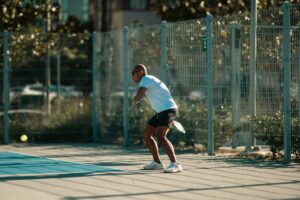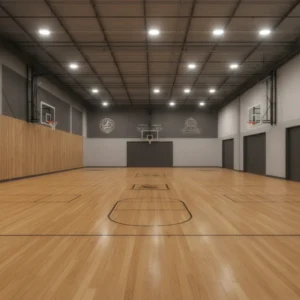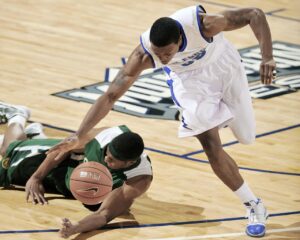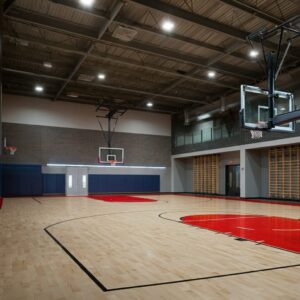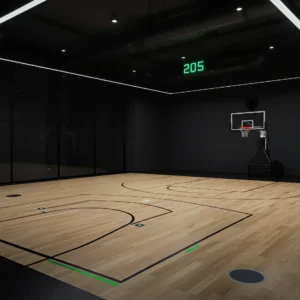Basketball is a high-intensity sport demanding speed, agility, and precision. From quick pivots to dramatic leaps, the action on the court places significant strain on players’ bodies. What if we told you that the court itself could play a pivotal role in reducing injuries and improving player performance? Enter hardwood basketball flooring – a game-changing surface that combines durability with athlete safety.
This blog examines how hardwood floors contribute to reducing injuries in basketball, why they are a preferred choice for professional and recreational courts, and what factors make them superior compared to other flooring types.
Why Choose Hardwood Basketball Floors?
Hardwood basketball floors aren’t just iconic; they’re scientifically designed to enhance the game while keeping players safe. These floors are typically constructed using maple wood, known for its durability, shock absorption, and appealing aesthetic. When compared to other surfaces, hardwood is uniquely engineered to provide the right balance of grip, softness, and energy return crucial for injury prevention.
The Science Behind Hardwood Floors
Hardwood basketball floors are built with a layered construction designed to manage force effectively. Beneath the maple wood surface, there’s usually a subfloor system that improves resilience and shock absorption. This means every jump, slide, or fall minimizes the impact on joints, knees, and bones, significantly reducing the risk of injuries.
Think of it as your unseen teammate, working tirelessly to lessen the blows players endure during every intense game.
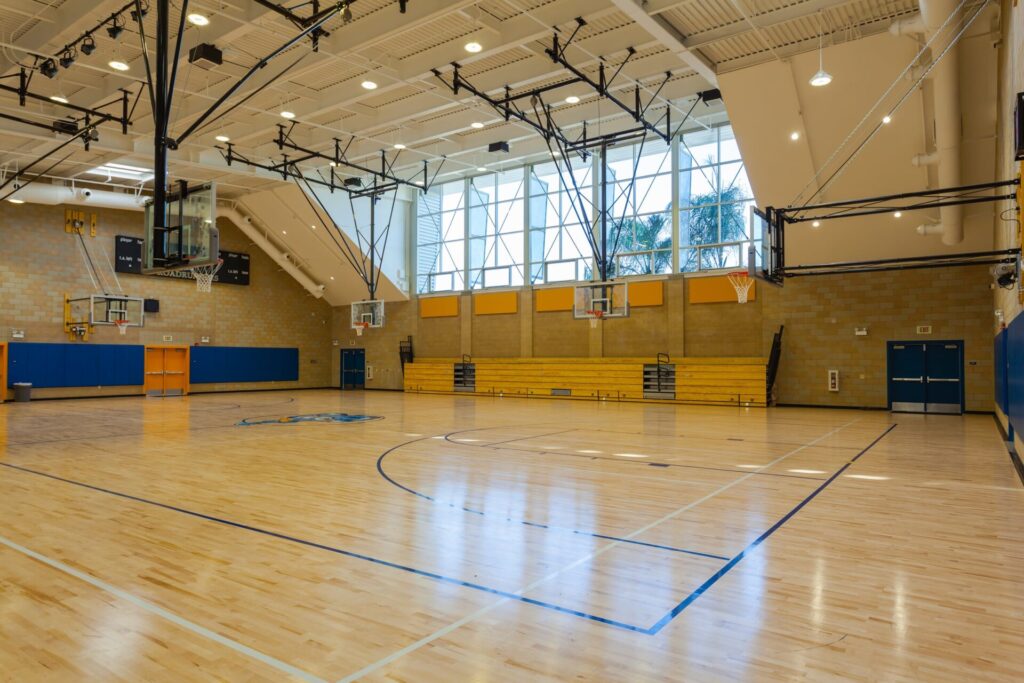
How Floors Impact Injury Rates in Basketball
The surface that athletes play on has a direct correlation with their risk of injury. According to data shared by professional sports organizations, the right basketball flooring can lower the risks of common injuries like ankle sprains, ACL tears, and stress fractures. Here’s how:
1. Shock Absorption
The repetitive jumping and landing in basketball exert tremendous pressure on a player’s joints and muscles. Hardwood floors absorb and distribute this force evenly, reducing the stress on the knees, hips, and lower back. Without this feature, athletes could face long-term damage or frequent injuries over time.
2. Consistent Ball Bounce and Traction
Unlike concrete or asphalt courts, hardwood provides a consistent surface for both ball bounce and player movements. This consistency allows athletes to sharpen their agility and footwork without unexpected slips or traction issues that could lead to muscle strains or ligament damage.
3. Reduced Risk of Skin Abrasions and Burns
Surfaces like asphalt, concrete, or even interlocking plastic tiles can cause severe skin burns and abrasions during falls. Hardwood’s polished maple surface is smooth, reducing the risk of these painful injuries for players.
4. Minimized Long-Term Wear
For professional players or even local league enthusiasts, long-term wear and tear on the body is a common concern. Courts designed with shock-absorbing layers underneath the hardwood help alleviate cumulative impacts on joints, prolonging the health of athletes in high-performance environments.
Hardwood Flooring vs. Other Basketball Court Surfaces
To truly appreciate the benefits of hardwood floors, it’s essential to compare them with other common basketball surfaces:
Concrete and Asphalt
These surfaces, while robust and cost-effective, can be unforgiving on players’ bodies. Concrete lacks shock absorption, leading to stress injuries in the legs and ankles over time. Additionally, falls on such abrasive surfaces often result in painful scrapes and burns.
Interlocking Sports Tiles
Interlocking sports tiles, like the GameChanger+ from Copo Sports, offer some improvement over concrete by adding cushioning and traction. However, they still fall short compared to hardwood in providing seamless shock absorption and consistent ball behavior. Studies have shown that interlocking tiles rank lower in minimizing injury risks.
Artificial Wood Alternatives
Some outdoor courts use artificial wood-like flooring, such as Copo Sports Macwood solutions, which are designed to mimic the properties of hardwood floors. Options like these strike a balance for those looking for an outdoor court but want similar shock-absorption and anti-injury benefits as indoor hardwood.
The Hardwood Advantage
Outdoor or artificial alternatives may come close, but the classic maple wood hardwood court reigns supreme in indoor basketball. Its seamless surface, engineered subfloor, and natural elasticity combine to create the perfect platform for safety, durability, and top-tier performance.
Hardwood Courts and Professional Basketball
It’s no coincidence that professional organizations like the NBA exclusively favor hardwood floors for their games. These floors are rigorously tested for performance, ensuring they meet strict standards for shock absorption, player grip, and game consistency. This standardization isn’t just about aesthetics; it’s a commitment to keeping players at the top of their game while minimizing career-threatening injuries.
Outdoor Hardwood Innovations
While hardwood has long been the choice for indoor courts, outdoor advancements like Macwood is revolutionizing basketball flooring. These all-weather surfaces replicate the feel of hardwood while adding enhanced durability for outdoor use. Resistant to UV rays, rain, and humidity, they allow players to enjoy the same professional-standard safety outdoors.
These solutions are especially useful for community courts, outdoor training facilities, and recreational spaces—bringing high player safety standards to all corners of the basketball-playing world.

Why Flooring Matters for Every Player
From casual neighborhood games to intense professional matches, the choice of flooring directly impacts game safety and quality. Whether you’re playing pickup with friends or coaching young athletes, investing in reliable basketball flooring like hardwood ensures everyone can enjoy the game without unnecessary injuries or discomfort.
For court owners, prioritizing high-quality flooring also minimizes long-term maintenance costs and creates a space that players return to time and time again.
Build Safer Courts with High-Performance Flooring
Are you considering upgrading your basketball court? Whether for indoors or outdoors, choosing a surface designed to look after both the player’s game and health is the best investment you can make.
Check out Copo Sports’ flooring solutions, including their leading Macwood outdoor courts and hardwood-inspired GameChanger+ tiles, to find options for building safe, world-class courts for every basketball lover.
It’s time to raise the bar and reduce the injury risks for players. Build a court that everyone loves—where every slam dunk safely lands.


